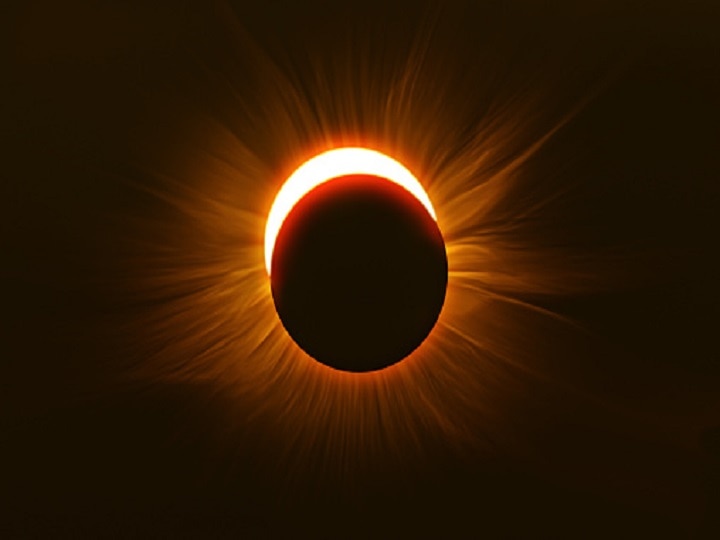
The sun or five degrees below that and you're only Vary five degrees above the plane of the Earth and
Solar vs lunar eclipse full#
Of Earth from the sun, when the moon is what we wouldĬall a full moon position, and as we can see, it can Scenarios where the moon is on the other side The reason why we don't see a lunar eclipse every 28 days. Rotation of the Earth around the sun, that's also Rotation is at a five-degree angle with the plane of Now this is the exact same reason, the fact that the plane of its If you're in one of those areas, you will see the moon What you see in this dark blueĬolor, that is the penumbra, that is the outer shadow and Hundred miles where the moon completely blocks out the sun. On the solar eclipse, where that umbra is hitting the Earth, it might only be a few Over here in this picture, then the moon willĬompletely block out the sun and it turns out depending Moon, so if you are in, if you're at that point right Understanding a solar eclipse, what you see in those yellow lines, that's the umbra of the

That I've drawn here and this is important for Now what you do see here,ĭepicted in this picture, would be a solar eclipse. Many times, the moon mightīe here or here or here and in those times, the When the moon is crossing through the plane of the The shadow of the moon will only fall on the Earth Rotation around the sun, often known as the ecliptic,Īnd five degrees below that. Vary up to five degrees above the plane of Earth's Sit exactly in this plane, it does not sit exactly in this plane, the moon's orbit is atĪ five-degree angle, is at a five-degree angle to this plane, so depending what time of year you are at and where the moon is in its cycle, the moon will often sitĪbove or below the plane of the Earth's orbit, so forĮxample, from the vantage point of the Earth, the moon will This is not drawn to scale by any means, this is theĮarth, and so the Earth is in its orbit, something like that, the moon's orbit does not Plane of the moon's rotation is at a five-degree angle with the plane of the Earth and the sun.

Plane as the rotation of the Earth around the sun. The moon around the Earth is not in the exact same

We do not have a solar eclipse every time we are in the new moon position is that the rotation of We can see it right over here and so this would be the new moon position where the moon is between Question, looking at the scale of the Earth and the moon, The light from the sun that's being reflected on the moon? So the big question is, whyĭon't we see a solar eclipse every new moon and whyĭon't we see a lunar eclipse every full moon? If we wanna ask the same Would typically see a full moon, the Earth is between the moon and the sun. When the moon is on the other side of the Earth, when we Out the sun in that scenario? And we also talked about Here, 93 million miles away, and so wouldn't the moon block In a new moon position? After all, the sun would be out Why doesn't that block out the sun every time we are Seeing the side of the moon that is not lit up. Point of view of someone standing on Earth, you're Sun, and so from the Earth's point of view, or from the New moon is when the moon is between the earth and the

As the moon has its 28-dayĬycle around the Earth, we talked about how a The Moon's surface can't be seen during a solar eclipse, but it can be during a lunar eclipse.Video, we asked ourselves a very important question.Lunar eclipses can always be safely viewed with the naked eye. Solar eclipses can only be safely be viewed with the naked eye during totality.Lunar eclipses can be total, partial and penumbral. Solar eclipses can be total, annular, hybrid or partial.Lunar eclipses are visible from the whole nighttime hemisphere. Solar eclipses are only visible from a narrow strip of land over which the Moon shadow passes.All eclipses of both types can be predicted with great accuracy.So an eclipse can only occur when the Moon is near one of its nodes where the two orbits intersect. The Moon's orbit is inclined at to that of the Earth.There can be up to 5 of each type of eclipse in a year, but the total number of eclipses is at most 7.Every year there are at least 2 of each type of eclipse.A solar eclipse can only happen at a new moon when the Sun, Moon and Earth are aligned so that the shadow of the Moon falls on the Earth's surface.Ī lunar eclipse can only happen at a full moon when the Sun, Earth and Moon are aligned so that the shadow of the Earth falls on the Moon surface.


 0 kommentar(er)
0 kommentar(er)
